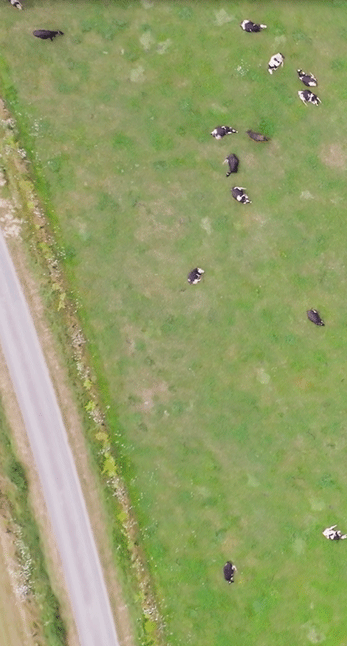Home / Your Needs / Protect your crops and livestock
Protect Your Crops and Livestock with Photovoltaics
Your crops and livestock at the heart of our priorities
Your crops and herds are subjected daily to various factors affecting their well-being and your yields: intense heat, frost, episodes of heavy rain or drought, as well as predators and pests. Photovoltaic solar energy provides a solution that not only meets a specific need for protection but also supports the development of your activity. Indeed, installing a solar structure creates a shelter that prevents certain nuisances and protects both your crops and livestock. These solutions, combining agricultural tools and solar energy production, offer several significant advantages.
For your crops:
- Protection against climatic hazards: Heatwaves, hail, late frost, disrupted seasonality—uncontrollable, unpredictable, and increasingly frequent weather events disrupt the growth and maturation cycles of your crops. Installing crop shading structures above your plants or opting for photovoltaic greenhouses helps mitigate or even eliminate the effects of these episodes and those related to temperature fluctuations.
- Protection against pests and diseases: By implementing nets that protect crops from pests (anti-insect nets) and diseases.
- Reduction of water stress: The shade provided by solar panels helps regulate soil temperature, thereby limiting evapotranspiration. Water resources are better managed, reducing the need for irrigation.
- Improved working conditions: Working conditions are significantly improved thanks to the shade provided by solar panels and the reduced temperature under the greenhouse or shading structure.
- Reduced use of inputs: Promotes the implementation of sustainable agriculture.
- Improved productivity and harvest quality: Achieved through a controlled environment with solar greenhouses.
- Protection against theft: By creating a fenced area as part of crop shading structures.
For your livestock:
- Improved animal welfare: Solar structures provide shade and shelter from bad weather. Animals can take refuge, reducing stress and discomfort caused by exposure to extreme temperature fluctuations.
- Easier care and feeding: With the installation of holding pens and equipment (troughs, waterers, etc.).
- Protection against predators and theft: With 2-meter anti-intrusion fences around the solar park and surveillance cameras connected to our 24/7 monitoring service.
- Protection of grazing areas: By preserving soil water resources and protecting against frost and drought, grazing periods can be extended by several weeks on the same surface.
Types of crops and livestock under our solar structures
Our various technologies for greenhouses, crop shading, and livestock structures allow us to meet the specific needs of farmers, depending on the type of crops or livestock involved. We already support farmers with the following crops:
- Market gardening: Tomatoes, peppers, zucchinis, eggplants, cucumbers, salads, asparagus, strawberries, raspberries, apples, aromatic herbs, berries.
- Arboriculture: Avocados, mangoes, citrus fruits, kiwis, bananas.
- Horticulture: Dipladenias, petunias, surfinias, lobelias.
- Viticulture.
- Field crops and cereals.
- Forage production and pastures.
Our photovoltaic solutions are also suitable for sheep and cattle farming, with the possibility of integrating grazing and forage production into your project.
Our agrivoltaic solutions
for your agricultural activity
As photovoltaic experts, we are committed to offering farmers tailor-made solutions that ensure the development of their crops under optimized agricultural production conditions and the protection of their livestock. We develop tools that adapt to agricultural projects, not the other way around, with features such as elevated structures and spaced photovoltaic tables.
All our agrivoltaic structures are custom-designed and turnkey; the farmer only needs to focus on the agricultural aspect of their project.
They trust us
We chose to turn to agrivoltaics because we face significant challenges on our farm regarding grazing for dairy cows. In the summer, from early June to late September, we experience a lack of grass production and access to pastures. With the agriPV project, we hope to gain 15 days of grazing in June before the grass dries out and regain 15 days in September for faster grass regrowth. Urbasolar took on the challenge of installing solar panels above the cows rather than placing cows under solar panels. The priority is truly given to our agricultural activity, and thanks to the proposed arrangements, we will be able to improve animal welfare with features such as paths for the cows to access pastures, redistribution of grass parcels, and, of course, shade for the animals.
Gilles and Virginie Forêt
Operators of GAEC of the Ecottays

References
Capacity:
2.7MWc
Photovoltaic Greenhouse in Arboriculture (13)
Thanks to this 3-hectare solar greenhouse, the operators were able to protect their flower crops, which are particularly sensitive to climatic hazards, and diversify their production with new species.
Annual production: 3.8 GWh, equivalent to the consumption of 1,740 people.
Capacity:
0.9MWc
Lamb's Lettuce Crop (13)
A young farmer specializing in lamb’s lettuce uses the solar greenhouse to meet production requirements for this crop. He can produce without suffering from climatic hazards and extend his production calendar to meet high client demand.
Annual production: 1.4 GWh, equivalent to the consumption of 700 people.
Capacity:
11.5MWc
Eco-Grazing (24)
This former shooting range in Dordogne, converted into a photovoltaic power plant, annually hosts the flock of sheep of a local breeder. The breeder benefits from an additional, completely secure grazing area that provides shelter for the sheep during intense heat.
Annual production: 1.4 GWh, equivalent to the consumption of 700 people.
Photovoltaic Greenhouse in Arboriculture at Le Temple Horticulture (2min 36)
